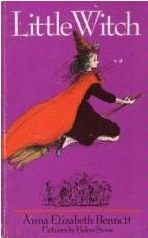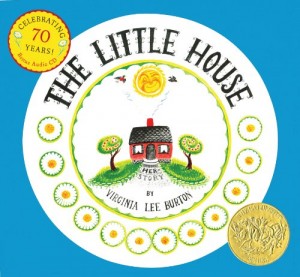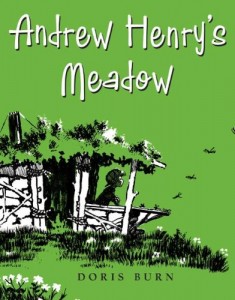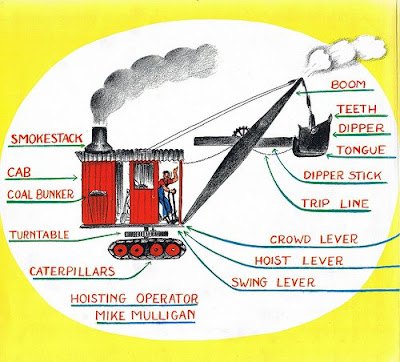–
Recently I had the chance to chat with an insightful, terrifically talented illustrator named Jeff Newman. We talked via email about the creative process behind his acclaimed 2016 book, Can One Balloon Make an Elephant Fly?
–
Jeff, I want to approach our conversation from the perspective of your role as the illustrator of Dan Richards’ story. How did it come to you? And what was your reaction upon reading those bare words on a white page? There isn’t much text.
Dan and I were represented by the same agent, Paul Rodeen. I was looking for a book to illustrate, so Paul sent me some of Dan’s manuscripts, one of which was Can One Balloon Make an Elephant Fly? I liked several of them, but that was the one that really stood out. Dan described it initially as being a joke and a punchline, and that’s basically what it was. But there was a lack of sentimentality about it that was moving, especially in the relationship between Mom and Evan (she thinks he is asking about a toy elephant, when he’s actually referring to a real one), two characters who come to an emotional understanding, even though they never actually see eye-to-eye.
Actually, that’s something I noticed in the illustrations. The two characters are often looking in different directions. They aren’t on the same page, so to speak. I guess the story depended on it.
Yeah, for story reasons they often couldn’t be looking at one another, but it worked on a symbolic level, too.
Did you have any further contact with the Dan as you worked on the book? I guess I’m wondering, how much freedom did you have to make this your story, too?
We worked together on the book (the original text did include some parenthetical notes regarding setting and “stage direction”) pretty much from the moment that I became interested in illustrating it. Then we both worked very closely with our editor at Simon and Schuster, Justin Chanda, as a group, and individually, while developing it. There is a lot of unwritten story here, so I don’t think it could have been done another way. We had to make sure that our interpretations of that unwritten story lined up, or could at least co-exist. I had a lot of freedom to put forward my interpretation, and even more so in the final artwork, but it was a democracy. We all put forward ideas that were either dismissed or ratified. I’m sure it could have gone wrong in any number of ways. Sometimes it did. I made about half of the book in a completely different style before we decided to go with something a little more naturalistic. We always got back on track.
Ha, that could be a tough conversation: “Um, Jeff, about your crappy artwork. We were thinking . . .”
It was hard to hear, but Justin took the time to explain the decision, and even gave me the opportunity to refute it. It was another example of this feeling like a partnership instead of an employer/employee relationship.
It’s refreshing to hear about your process. The industry standard is to keep the author and illustrator separate, a strategy that 1) protects the illustrator from the overly-meddlesome author; and 2) gives the publisher/art director more control. Personally, as a writer, I find it a little sad to get shut out from the process. We don’t see that in highly successful books by Steig, Sendak, Lobel, Seuss, Waber, Keats (the list goes on) because they do both. Word and text comes together naturally.
Obviously good work can come out of that separation of author and illustrator. But it’s strange that this is an innately collaborative process, and most of the time, that collaboration is mediated or nonexistent. It can work, though. It should work. It did for us.
I got to do it once long ago, collaborating with an illustrator named Jeffrey Scherer in a book titled Wake Me In Spring. I think there are clear benefits in working together. I sense that we’re seeing a little more of it lately, those old rules breaking down. But I digress! The two characters in this story, a mother and son, are brown-skinned. How and why did you arrive at that decision?
–
I never considered any ethnicity for the characters other than African-American, except maybe once in conversation with Dan, and that was really just an acknowledgment that it was a choice, not a questioning of that choice. The only thing that I can point to that informed that decision was the initial setting of the story, which was the neighborhood/apartment building where the characters live; originally, the story began with Mom and Evan leaving the zoo and heading home. When I think of neighborhoods/apartment buildings in a city, I think of Ezra Jack Keats and A Snowy Day and Whistle for Willie, which of course feature characters of African descent. So, Mom and Evan are partially a callback to those characters. But we moved the setting completely to the zoo, and I think that connection was lost, for better or worse.
Oh, too bad, I really like that illustration, and it does have an Ezra Jack vibe to it. The book must have been challenging in that respect, since you were confined to a single location. Sort of a one-set play. It can get static.
Well, I’m actually drawn to a one-set, theatrical kind of approach and the repetition of imagery, so I think the change ended up being good for the story, and for me, too.
Early in the story, you show us something that’s been popping up a lot in children’s books. The parent on the phone, disengaged, and the child seeking interaction. It’s not a new dynamic exactly -– the child seeking attention has been going on since the days of Alley Oop –- but technology presents a powerful new wedge. It comes as a relief when Mom finally sees her son, turns and gives him her full attention: his face lights up.
It took me a while to understand the phone’s significance to the story. I replaced it with a book early on, during the second or third round of sketch revisions, because it felt out of place; whenever this story is set, it does not feel like now.
No, it doesn’t. But isn’t that function of your illustrations? When I think of many of Mark Teague’s books, particularly his early work — and William Joyce, too — and Greg Ruth, while I’m at it — they achieve a sort of timelessness by setting their books in a quasi-50s America. Or maybe that’s where “childhood” exists for them?
Maybe. My illustrations definitely function to put the reader in another time, but that time isn’t necessarily the 70s and early 80s, when I was a kid. If they do achieve timelessness, it’s by not being too on the nose about the era they are inspired by, or when the story is taking place. I think that’s why I resisted the phone.
But ultimately, you ditched the book prop and returned to the phone.
The problem (which my editor pointed out, thankfully) is that a book implies an intention of neglect — if you bring a book with you, you probably plan on reading it. It made Mom less sympathetic. But everyone brings their phone everywhere, and I would venture to guess that few people plan on using it. We just do. I’m certainly guilty of it. So, while the phone may date the story a little, it ended up being the perfect choice. It made Mom relatable. We know that what’s she’s doing is wrong, but most adults in her situation have done the exact same thing at one time or another.
Well, I guess I’m more sympathetic to a person who can’t put down a book over somebody who’s super-involved with her phone. But that’s me. It’s interesting that you think of the phone “dating” the story, because it makes it current; you are thinking 20 years down the road, when we’ll all have implants. It’s like scenes in movies when the character pulls out one of those hysterically gigantic phones. That kind of dated.
Exactly. I don’t know what phones are going to look like in the future. If this book exists in 20 years, will kids be asking what that little, black square is? I should be so lucky.
I feel like your art for this book in particular has a certain old-school quality to it. For some reason, the end papers reminded me of Virginia Lee Burton (The Little House, Mike Mulligan and the Steam Shovel). I’m not savvy enough to pinpoint why your work here gives me that sense; I just feel that tug.
I’m a huge fan of old picture books — the 30’s through the 80’s.
Did you think something went amiss in the 90s? Because I do.
No, I just left out the 90s because I didn’t really look at picture books when I was in my teens and early 20’s, and for some reason (maybe the reason you’re alluding to!) I haven’t spent much time with books from that era. The 90s were all comics and animation for me.
Who are you biggest influences in children’s books?
When I consider a stylistic approach to a book, I almost always look to the past for suggestions. Sometimes those suggestions coalesce into a unified look, and sometimes they stand out from page to page, and I’m okay with either as long as they convey the information the book needs them to. I don’t get hung up on visual consistency too much. There’s definitely some Virginia Lee Burton in Balloon, along with some Ezra Jack Keats, as I mentioned earlier. And some Robert McCloskey. And Roger Duvoisin. And some Sesame Street cartoons from the 70’s.
The cover to your book is unusual and striking. The typeface seems perfect. I know that arriving at a final cover can be a tug-of-war with a lot of input coming from the publisher. How did you arrive at this cover?
The final cover illustration was one of three or so approaches that I presented to the publisher. That was pretty straightforward. The text was more of a back and forth. We started with the title taking up a much larger area, and I felt that it was competing with the singular image of the elephant’s trunk. So, I tried my hand at it, and that was the design we went with. The font — I think it’s called Rockwell — is one that I’d been using for placeholder text in the book’s interior word balloons (which eventually graduated from placeholder to actual text once the title was redesigned). It was challenging to fit all those words into a compact space, and still have it come across as legible, but our designer, Alicia Mikles, and editor, Justin Chanda, suggested a rearrangement of the colors so that the words “balloon” and “elephant” were the most eye-catching, and that certainly helped.
–
What are you working on now?
I just finished illustrating a book for Candlewick Press called Gum, and that should be out next year some time. I’m also close to completing my next book (as author/illustrator), The Greedy Worm. And then I have another book called Missing Prudence that I’m hopeful will be in production by the time people read this. This is the first book that I’ve written, but not illustrated. A fantastic illustrator, Larry Day, is working with me on that.
Oh, I love when that happens — illustrators surrendering that role to someone else. Brave of you. Cool, unexpected things can happen. In this case, maybe it’s good if you stay out of the way. By the way, I recently discovered Larry Day on Facebook. He puts up these fabulous, closely-observed sketches of coffee shops, classroom scenes, garage sales. Crazy talent.
I admire his work so much. He’s a real draftsman. Our book came together very organically, similarly to One Balloon. I just sent Larry an email, and asked if he wanted to work with me on this idea I’d been tinkering with since about 2010. We worked pretty closely over the past year, developing it. And now, here we are. I’ve been very lucky to have had that happen twice.
 Readers can find more information about Jeff Newman from his mother, who is happy to answer questions. Or, failing that, the interwebs can be a terrific source of fake news and real facts inextricably mashed together. It’s a tangled web we weave! Jeff’s other books include: Phoebe and Digger, Rabbit’s Snow Dance, The Boys, and more.
Readers can find more information about Jeff Newman from his mother, who is happy to answer questions. Or, failing that, the interwebs can be a terrific source of fake news and real facts inextricably mashed together. It’s a tangled web we weave! Jeff’s other books include: Phoebe and Digger, Rabbit’s Snow Dance, The Boys, and more.
ABOUT THE “5 Questions” Interview Series: It’s a little project I’ve assigned myself, hoping to reach 52 authors & illustrators in the course of a year, always focusing on one book.
Coming later this week, Matt Phelan. Scheduled for future dates, in no particular order: Bruce Coville, London Ladd, Lizzy Rockwell, Jeff Mack, Matt Faulkner, and more. To find past interviews, click on the “5 Questions” link on the right sidebar, under CATEGORIES, and scroll till your heart’s content. Or use the handy SEARCH option.
Guest so far:
1) Hudson Talbott, “From Wolf to Woof”
2) Hazel Mitchell, “Toby”
4) Matthew McElligott, “Mad Scientist Academy: The Weather Disaster”
5) Jessica Olien, “The Blobfish Book”
6) Nancy Castaldo, “The Story of Seeds”
7) Aaron Becker, “Journey”
8) Matthew Cordell, “Wish”
–
Add a Comment




















Love these two older books and like you, I remember reading the city mouse and the country mouse as a kid myself. I remember thinking... why does it have to be one or the other? Even today, I try to combine these two locations in my life.